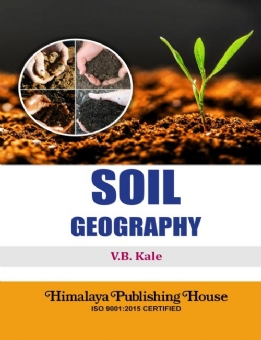Soil Geography
no information available
I am very happy to handover this book to students, researchers and academicians. This book entitled Soil Geography consists of 9 chapters. Being a student and farmer, I have completed my thrust of book writing through this book. This book is useful for the students of MPSC and UPSC. This book will support NET, SET, SLET and JRF students. Content involved in this book is useful to the students of Environment Science, Soil Science, Geography, Geology, Chemistry and Agriculture. This is my first effort of book writing. I consider this book as one particle in the ocean of knowledge. Constructive suggestions are most welcome and will be added in the next edition. Soil Geography is the branch of Physical Geography. Soil scientist wishes to display the spatial distribution of the soils. Use of soil is done by human being right from the evolution of the Earth and which is continued. This book tries to discuss about the importance of soil. In this book, Chapter 1 provides detailed description, introduction, nature and scope of Soil Geography. History of development of soil geography, approaches of study of soil geography, nature of soil geography, scope of soil geography are included in first chapter. Chapter 2 explains details about formation of soil, parent material, climate, biota, time and topography. Chapter 3 deals with components of soil, minerals, organic matter, air, water and micro organism. Chapter 4 focuses on characteristics of soil, physical characteristics of soil, density of soil, porosity of soil, soil structures, soil texture, soil colour, soil consistence and soil surface area. It also explains about chemical Characteristics of soil, soil PH and electrical conductivity. Chapter 5 discusses about soil profile, characteristics of soil profile, soil horizons, O horizon, A horizon, B horizon, C horizon and R/D horizon. Types of soils are explained in Chapter 6th which includes alluvial soil, black soil, desert soil, laterite soil, mountainous soil and red soil. Chapter 7 covers erosion, quality and conservation of soil. erosion of soil, erosion by water, erosion by wind, erosion by ice, tillage erosion, artificial erosion (human-being induced), quality of soil and soil Loss, quality of agricultural soil in Nashik District and conservation of soil. Chapter 8 deals with applications and research in soil geography. It covers soil resource inventory in watershed, soil-landscape Analysis: remote sensing approach, issues of the watershed management and soil erosion, deriving erosion model parameters using RS and GIS Future Research Needs. Last Chapter 9 includes soil testing and related aspects. Contents - 1. Soil Geography: Definition, Nature and Scope 2. Formation of Soil 3. Components of Soil 4. Characteristics of Soil 5. Soil Profile 6. Types of Soil 7. Erosion, Quality and Conservation of Soil 8. Soil Pollution 9. Soil Testing 10. Applications and Research in Soil Geography References Appendix ... Read more Read less











